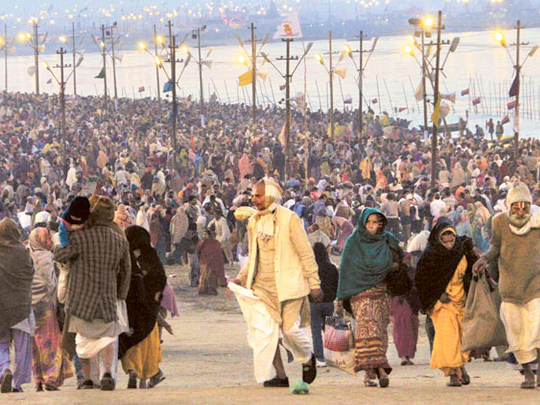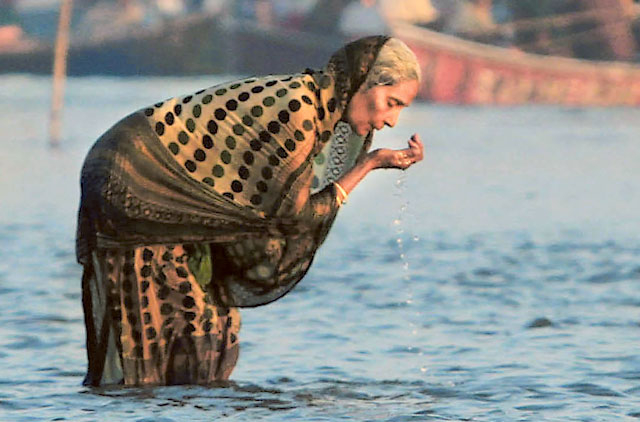
Maha Kumbh Nagar, Allahabad: The world’s largest pop-up city is all set to host millions on Sunday when a sea of humanity descends here for a mass bathing festival on the banks of Sangam where India’s longest river Ganga meets Yamuna and mythical Saraswati, a river that exists only in the hearts of the faithful.
An estimated 30 million Hindu devotees are expected to be in Allahabad, a city of 1.2 million that is also known as the birthplace of three prime ministers – Nehru, Indira and her son Rajiv Gandhi.
On Saturday, millions had already arrived in this massive tent city - spread over 2000 hectares - for Mauni Aamaswya, an auspicious day for Hindus who believe taking a dip in Sangam will wash their sins. Allahabad has no air connectivity and the millions who are reaching here are coming on hundreds of special trains and thousands of buses.
Thousands are simply walking to this biggest gathering of humanity as Maha Kumbh Nagar and parts of Allahabad city have been declared a no-vehicle zone in anticipation of a huge turnout of pilgrims.
Setting up a temporary tent city to accommodate millions of devotees is a humongous task and a huge logistical challenge involving years of planning and massive budgetary allocations, officials told Gulf News.
Maha Kumbh is held every 12 years but this one very special as it completes a specific planetary cycle of 144 years. The festival is expected to draw around 100 million people over a period of 55-day period.
An army of government officials and private contractors are deployed to set up the Maha Kumbh Nagar on the sandy riverbed. “Around 10,000 government employees and thousands of private sector employees spent 50 days creating this city,” senior officer Jitendra Kumar Sharma told Gulf News. “A total of 28 magistrates are on duty round the clock,” he added.
Creating this city on the riverbed involves urban planning, electric grid, sanitation network, hospitals, law and order machinery, fire stations and much more. The blueprint of Maha Kumbh Nagar reads like a civic infrastructure plan of a large city.
Sample this: Over 156 kilometres of asphalt and tiled roads laid on riverbed; 160 kilometres of metal plates to allow smooth movement of pilgrims on sand; 550 kilometres of pipeline to supply 80,000 kilolitres of water for drinking and washing; 18 large pontoon bridges to connect 13 sectors of Maha Kumbh Nagar; 770 kilometres of electric cables, 130,000 connections drawing power from 73 sub-stations; 40,000 toilet seats; 14 hospitals with a total capacity of 370 beds and 83 ambulances; 750 trains and 4,500 buses to bring pilgrims.
All this will be dismantled within a week when the festival ends early next month, according to Sharma.
The pop-up city has generated a lot of interest among academics, researchers and companies who are coming here to study crowd dynamics, crowd behaviour, mobile and internet phone usage among other things.
Over 300 journalists from 50 countries and hundreds of Indian journalists are camping here to cover this mega spectacle of faith that has baffled Western academics.
A team of Harvard University is here to study “economics and logistics” behind the city. “This is probably the first time that Harvard is doing something like this, where we’ve pulled together ... different disciplines in a way that all faculty and students are going to be together to look at a phenomenon,” Associate Director of Harvard’s South Asia Institute, Meena Hewett, said in a press release.
Among other things, the Harvard team “would seek answers to the question of ‘How on earth is an event of this size possible’,” writer Logan Plaster, who is part of the team told Times of India.













